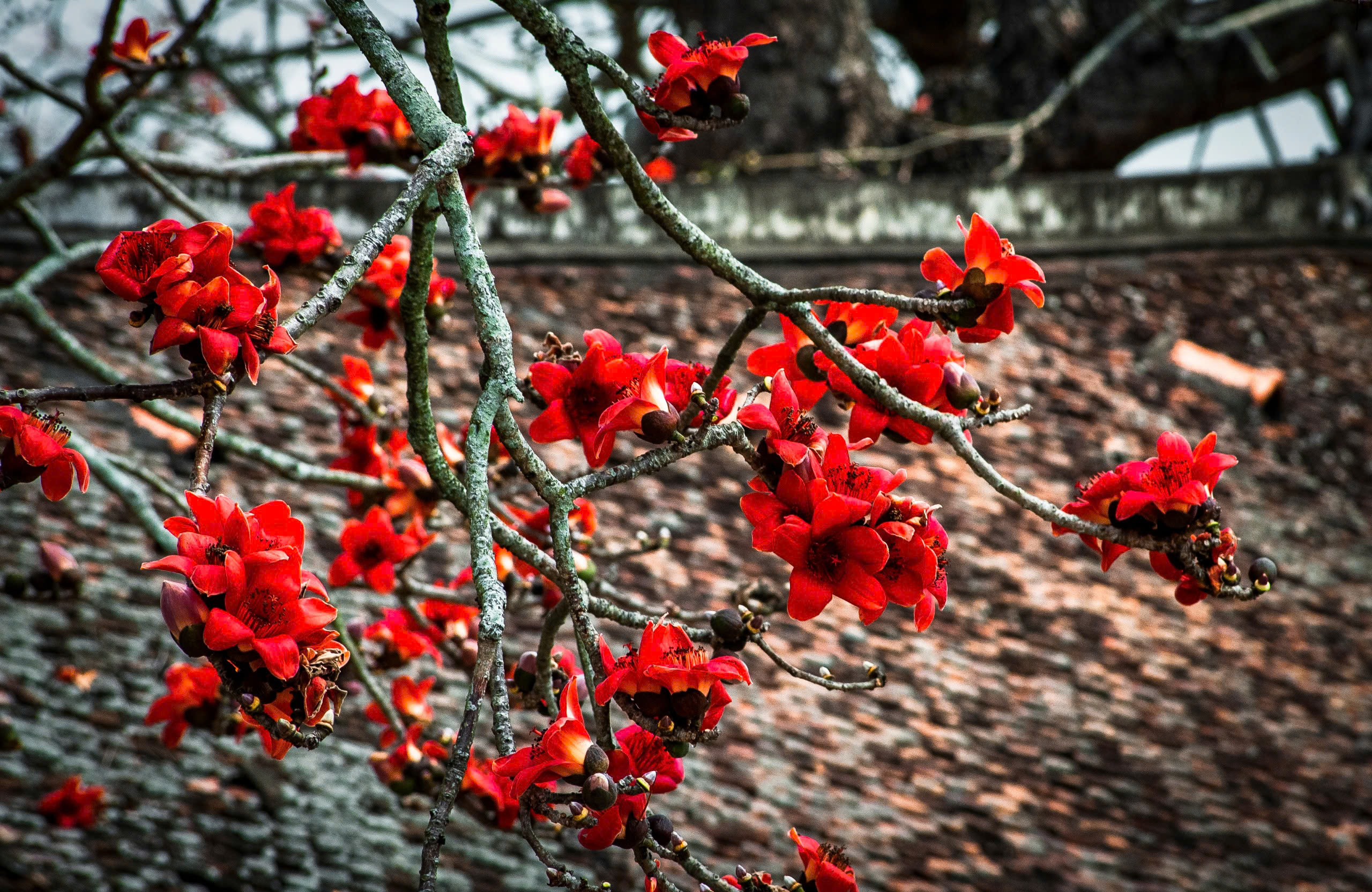Amazing photos of Museum of Cham Sculpture you'll want to visit now
First established in 1915, the Da Nang Museum of Cham Sculpture has confirmed its position as a place to preserve and promote unique cultural heritage in the city in particular, and in Viet Nam as a whole.
The museum is now home to an extensive collection of various-sized Cham sculpture. The majority of the sculptures date back to between the 7th and the 15th centuries and are made from sandstone in different art styles.
All the displayed exhibits showcase the cultural exchanges and development of Oriental countries during medieval times, and represent the pinnacle of the Champa civilisation.
Most notably, the museum is now the only place in the world to preserve over 1,000 year-old statutes belonging to the legendary Cham culture.
Three precious artifacts on display at the museum have been recognised as national treasures by the Vietnamese government, namely My Son E1 and Tra Kieu pedestals and Tara Bodhisattva statue.
In 2011, the venue was recognised as a first-class national museum by the Vietnamese Ministry of Culture, Sports and Tourism.
Here are some amazing images from the must-see museum, taken by our reporter Dang No
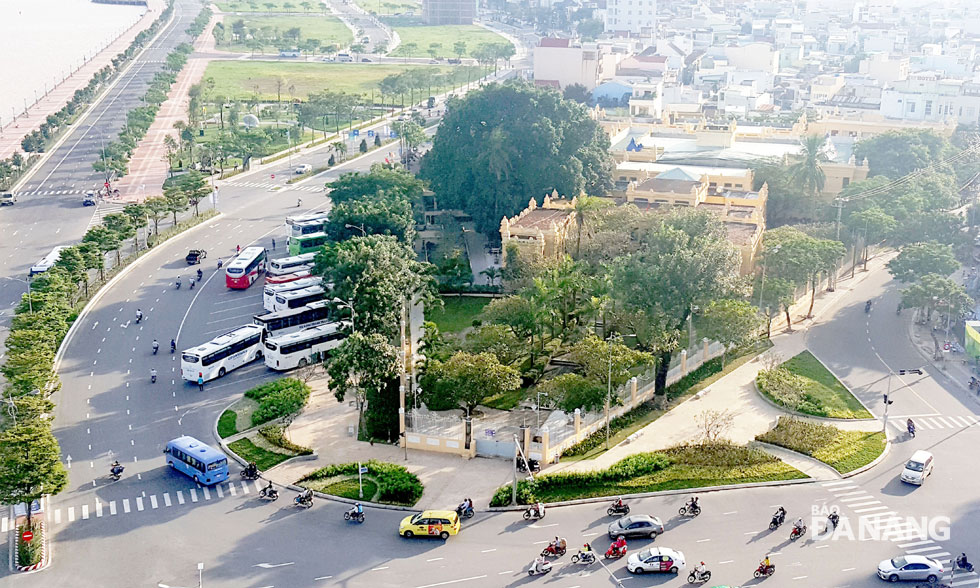 |
| An overview of the museum from above |
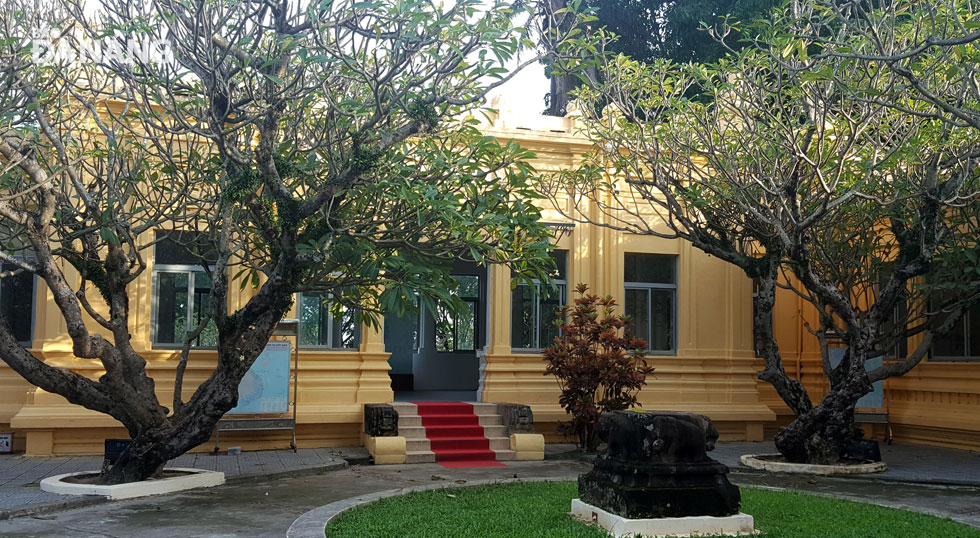 |
| A close-up view of the venue |
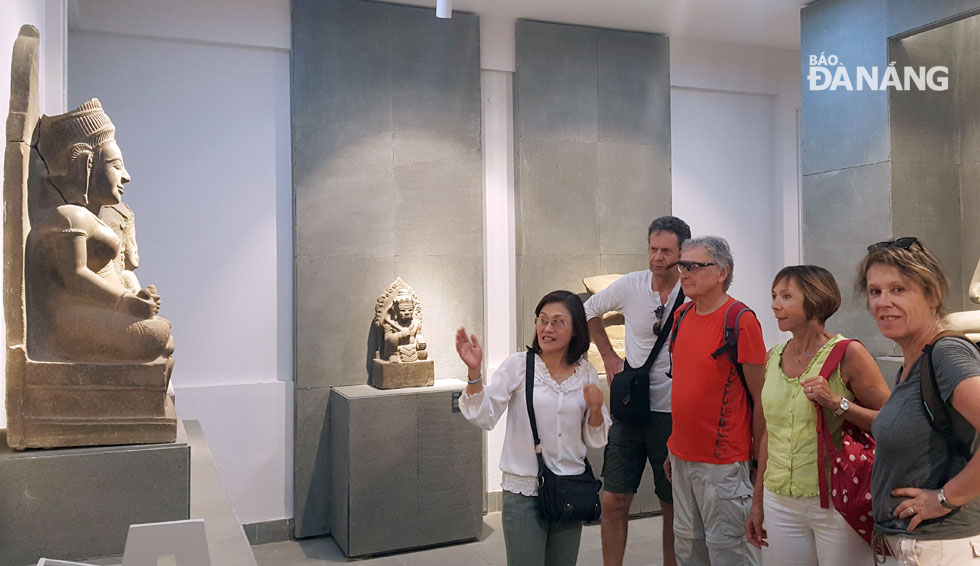 |
| Foreign visitors learning about the Cham culture through the exhibits |
 |
| The Tra Kieu pedestal |
The Tra Kieu pedestal is one of the national treasures on display here. The valuable pedestal, consisting of a base decorated with friezes in bas relief, an ablutionary cistern, and a massive lingam, is regarded as one of the masterpieces of the Cham arts. The figures on the friezes are especially beautiful, and represent episodes from the life of Krishna as related in the Bhagavata Purana. At each corner of the pedestal, a leonine atlas appears to support the weight of the structure above him.
 |
| The My Son E1 Pedestal |
Another national treasure is the My Son E1 Pedestal which a typical pedestal artifact found at Quang Nam Province’s My Son Sanctuary. The exhibit is the only Champa pedestal depicting the detailed daily lives of Hindu monks, natural scenery, and animals.
Most notably, the sculptural arts on the pedestal is called My Son E1 style which has helped to localise foreign cultural influences. The large pedestal is a typical artifact from the 1st phase of the construction of the Champa towers.
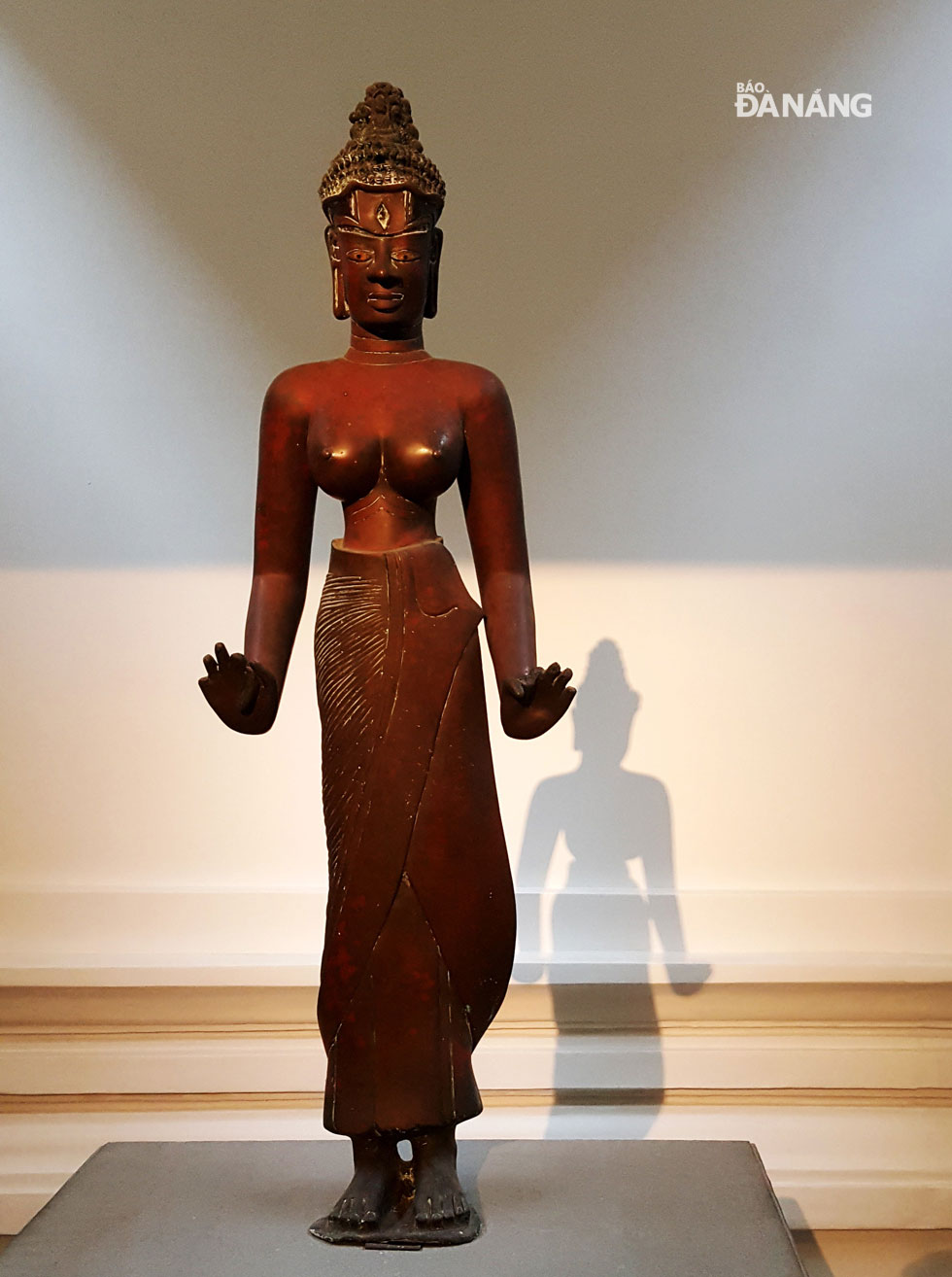 |
| Tara Bodhisattva statue |
The Tara Bodhisattva statue of 1.15 meters high and bearing gemstones in its eyes and forehead is one of the largest bronze statues featuring the Dong Duong style of more than 1,000 years ago.
Tara is a female Bodhisattva in Mahayana Buddhism who appears as a female Buddha in Vajrayana Buddhism. She is known as the ‘mother of liberation’, and represents the virtues of success in work and achievements.
The statue demonstrates the traditional art pinnacle of Champa with sophisticated bronze casting techniques and stylish sculpture embodying the culture of Dong Duong. According to the introduction of the museum, the statue was unearthed by people in Binh Minh Commune, Thang Binh District, Quang Nam Province in 1978.
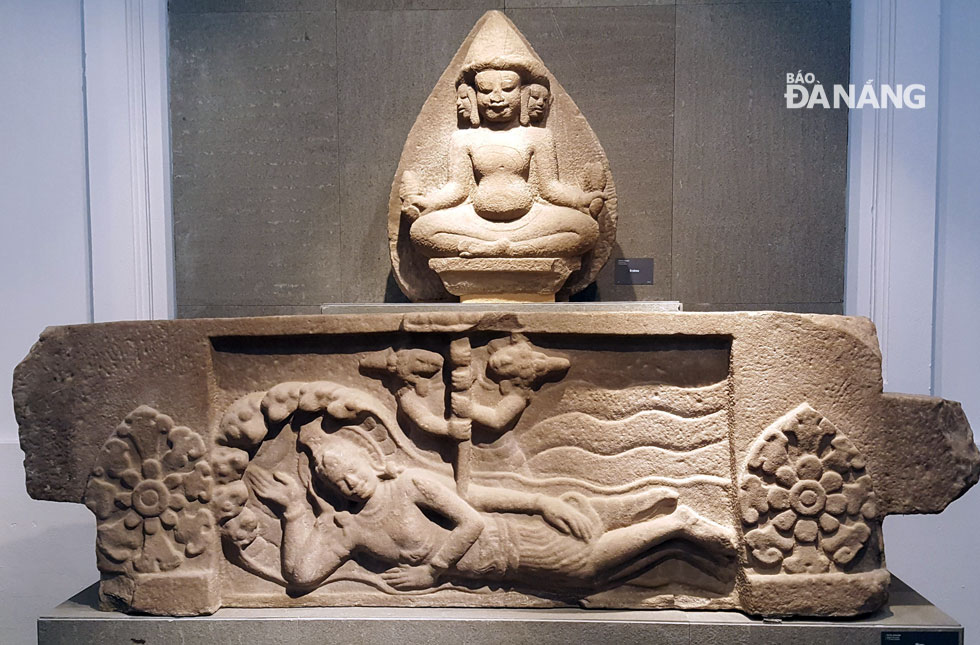 |
| A statue of Visnu who is one of the principal deities of Hinduism. Vishnu is the ‘preserver’ in the Hindu trinity (Trimurti) that includes Brahma and Shiva |
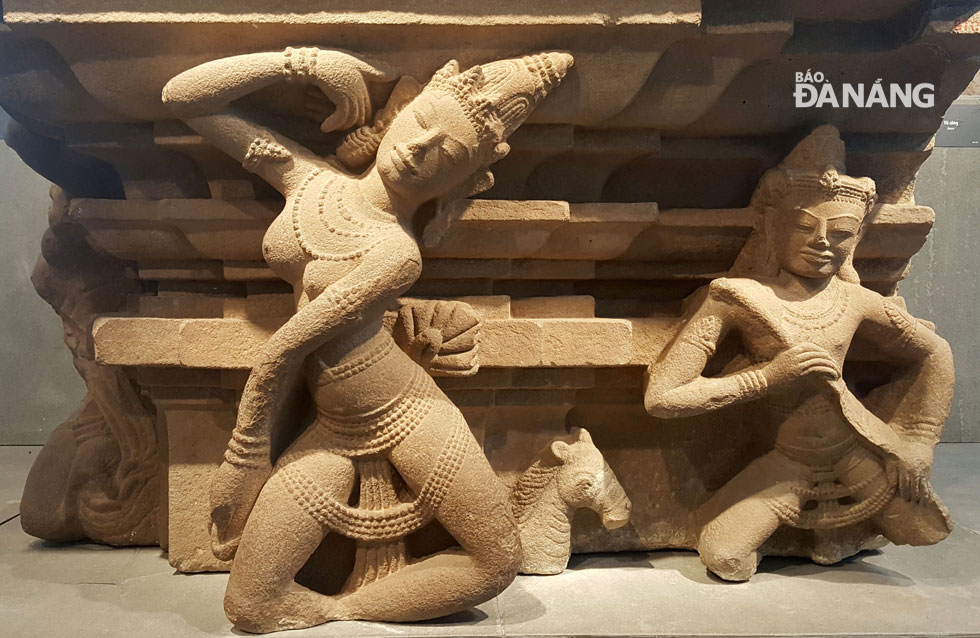 |
| A statue depicting the image of Apsara dancers |
 |
| Sculptures of ancient deities |
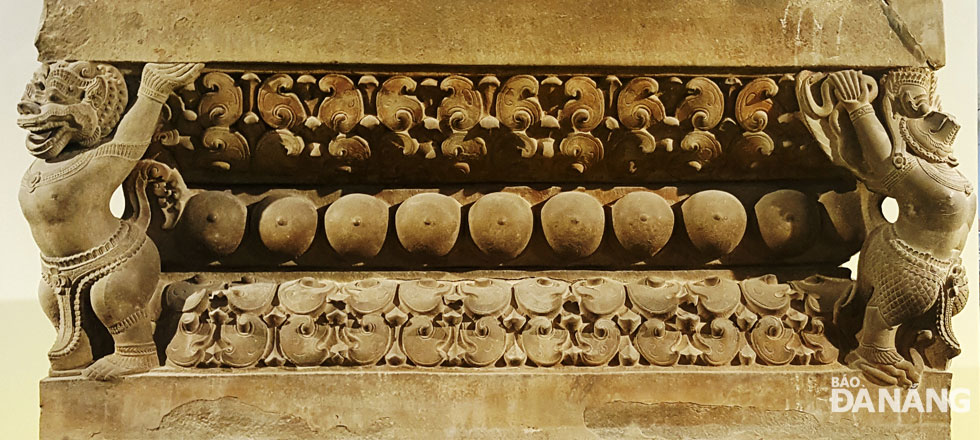 |
| Sophisticated features of an artifact |
 |
| An impressive exhibit of royal court dance |


